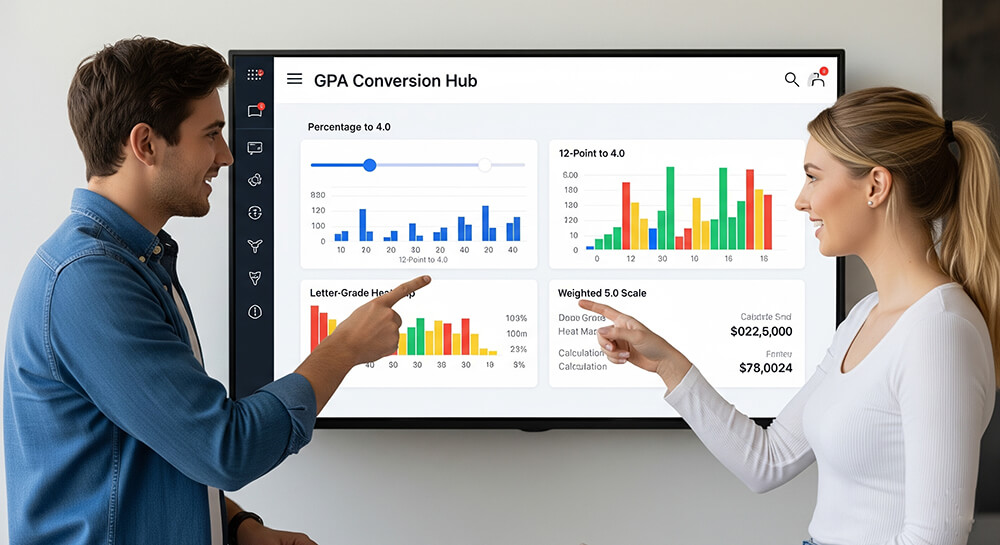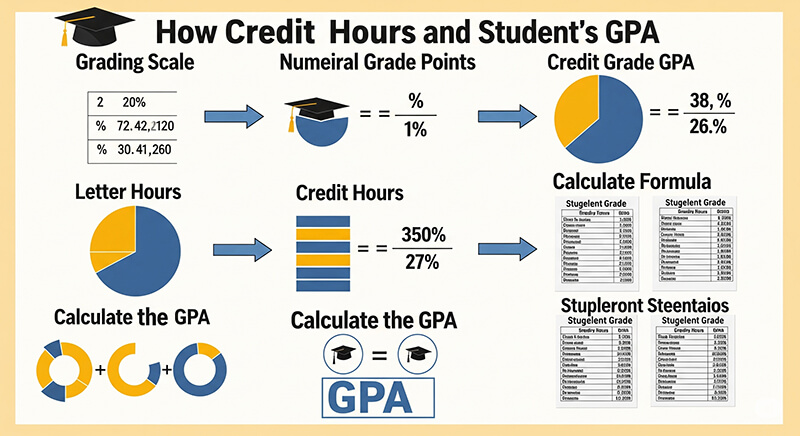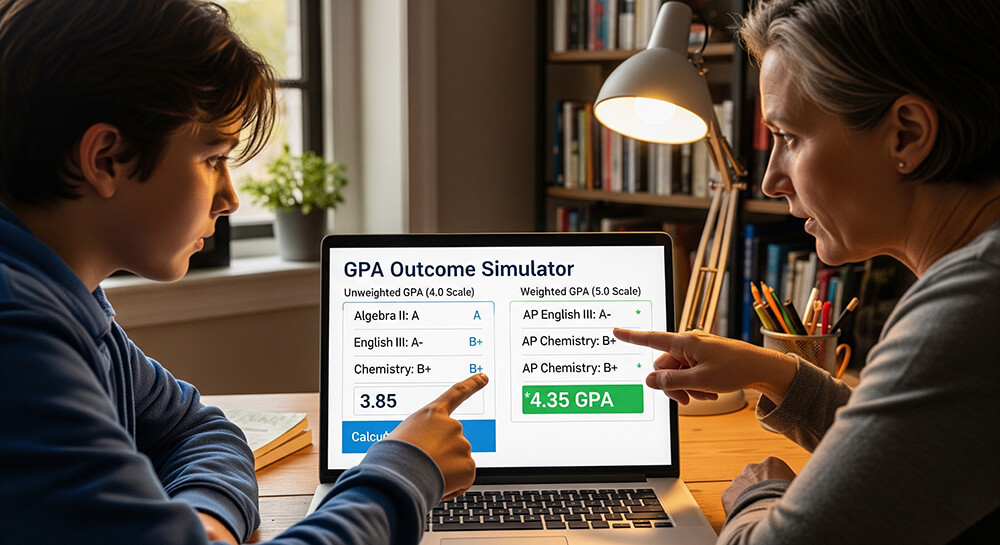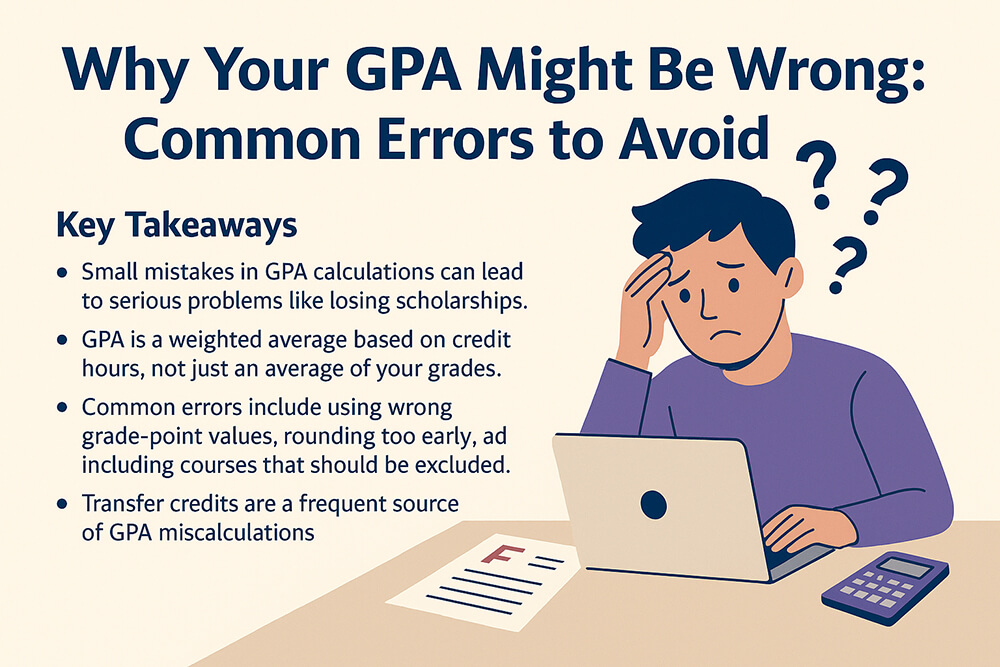Key Takeaways
| Feature | 12-Point System (Canada) | 10-Point System (Latin America) | The Big Challenge |
|---|---|---|---|
| Where It's Used | Mostly in Canada, by about 65% of universities. | Common in Mexico, Colombia, Ecuador, and other Latin American countries. | The systems are not interchangeable; a 9 on one scale is not a 9 on the other. |
| How It Works | Each letter grade is one point apart, making it easy to see small differences in performance. | Focuses on identifying top performance, with a 10 meaning "excellent." Passing grades vary by country. | Direct conversion is complex due to different educational philosophies and country-specific rules. |
| Conversion to 4.0 | A 12 is a 4.0, an 11 is a 3.9, and a 9 is a 3.3. | A 10 is a 4.0, but a 9 is often around a 3.6. | The same number can have a different 4.0 value, impacting college applications and scholarships. |
| Best Tool | A specialized GPA converter that understands the nuances of both systems. | Use a tool that allows for country-specific adjustments. | Universal GPA Conversion Charts & Tools are needed for accuracy. |
What Are the 12-Point and 10-Point GPA Systems?
Grading systems are different around the world. In Canada, many universities use a 12-point scale to measure student performance. In Latin America, a 10-point scale is much more common. These two systems look at grades in very different ways. The 12-point scale is very detailed, while the 10-point scale focuses on a clear pass/fail line and rewards top scores. Understanding both is key for students who plan to study in different countries.
A Closer Look at the Canadian 12-Point Scale
The Canadian 12-point scale is popular because it is very clear. Each letter grade is one point apart. This makes it simple to see the difference between an A and an A-, for example. A perfect score is a 12, which equals a 4.0 in the United States. This system provides a very granular look at a student's achievement. A 12-point to 4-point scale chart can show you exactly how each point translates to the more common 4.0 scale.
Understanding the Latin American 10-Point Scale
The 10-point scale used in many Latin American countries works differently. A score of 10 is "excelente," or excellent. The passing grade can change depending on the country. In Mexico, a 7 might be passing, while in Colombia, it could be a 3 on a 5-point scale for higher education. This system is designed to clearly show who has mastered the material. For students from this region, a study abroad grades gpa integrator is a vital tool for translating these scores for international applications.
The Big Problem: Comparing Apples and Oranges
The biggest challenge for students is that these two systems are not the same. A 9 on the Canadian 12-point scale is a B+, which converts to a 3.3 GPA. A 9 on a Latin American 10-point scale is excellent, often converting to a 3.6 GPA. This 0.3-point difference is huge. It can affect your chances of getting into graduate school or winning a scholarship. This is why a simple number-to-number comparison does not work. A transfer-credits-gpa-integrator can help manage grades from different systems.
How to Convert Between Scales: Formulas and Tools
To convert grades accurately, you need the right formulas and tools. A basic GPA formula guide can give you an idea of the math involved. For the 12-point scale, the formula is often GPA (4.0) = (12-Point Score / 12) * 4. For the 10-point scale, it is GPA (4.0) = (10-Point Score / 10) * 4. However, these simple formulas do not account for country-specific rules. To truly understand how to calculate gpa across these systems, a specialized calculator is the best option.
Why Accurate Conversion Matters for Your Future
An accurate GPA conversion can open doors. Graduate schools and scholarship committees look at GPA to judge academic performance. A small difference in your converted GPA can be the deciding factor. An outcome simulator can show the difference between a 4.0 vs 5.0 GPA outcome simulator, and the same logic applies here. A properly converted high score shows your true academic ability and can lead to better opportunities, like making the Dean's list eligibility checker show a positive result.
Student Confusion and the Need for Clarity
Many students are confused and frustrated by these different systems. Social media platforms like Reddit are full of questions from students trying to figure out their GPA. One user pointed out that even within Canada, different universities use different scales. This lack of a single standard makes it hard for students to know where they stand. It is easy to make mistakes, so a guide on common GPA calculation errors to avoid is very helpful.
Different Schools, Different Philosophies
The 12-point and 10-point systems come from different ideas about education. The Canadian system rewards small steps of improvement. The Latin American system focuses on recognizing outstanding achievement. Neither is better than the other, but they are different. This is why a direct comparison is difficult. A guide on how school districts calculate GPA can show how these philosophies are put into practice in different regions.
Using Calculators for Accurate International Conversions
The best way to handle these conversions is with a dedicated calculator. A college gpa calculator designed for international students can handle these complexities. For younger students, a high school gpa calculator can also be useful. These tools are programmed with the specific rules for different countries and universities. They take the guesswork out of the process and give you a reliable number you can use on applications.
Planning Your Academic Path Across Borders
If you plan to study or work in another country, understanding your GPA is the first step. You can use a cumulative gpa calculator to track your grades over time. For students just starting out, a freshman year GPA predictor can help you set goals. These tools empower you to make informed decisions about your future, no matter where your academic journey takes you.
Frequently Asked Questions (FAQ)
What is the main difference between the 12-point and 10-point scales? The 12-point scale, used mainly in Canada, is more granular, with each letter grade being one point apart. The 10-point scale, common in Latin America, focuses on identifying top-level "excellent" performance, with a 10 as the highest score.
Which countries use which scale? The 12-point scale is used by about 65% of universities in Canada. The 10-point scale is used by about 85% of universities in countries like Mexico, Colombia, and Ecuador.
Why is converting between them so hard? Converting is difficult because the scales are based on different educational philosophies. A score of 9 on the 12-point scale (a B+) is not equivalent to a score of 9 on the 10-point scale (an excellent grade). Country-specific rules also add complexity.
What is the best way to convert my GPA for a US university application? The best and most accurate way is to use a specialized online GPA conversion tool. These calculators are designed to handle the specific rules of different countries and their grading systems, giving you a reliable 4.0 scale equivalent.










